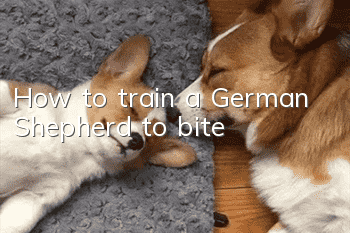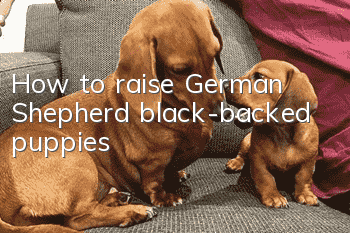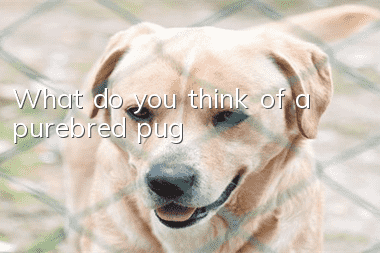How to train a German Shepherd to bite

The first step: You need to cultivate the courage and hatred of the German Shepherd.
Taking advantage of the opportunity when the German Shepherd is resting in the kennel, the assistant trainer pretends to be a stranger and approaches the German Shepherd from far to near with weird and panic movements or makes sounds to attract the attention of the German Shepherd. And tease the dog about 5 meters away from the kennel. In the early stage, the purpose is to arouse alertness. After several times of teasing, when the German Shepherd can show vigilance or desire to bite the assistant trainer who appears within a certain distance, the assistant trainer can start to feint attack on the German Shepherd. Provokes hatred and active defensive responses in German Shepherds. This kind of training can be carried out 2-3 times a day until the German Shepherd can bark and pounce on the assistant trainer who appears in the kennel, trying to rush out of the kennel and attack. It should be noted that the trainer does not need to be present when the assistant trainer is provoking, so as not to distract the dog's attention. After training, enter the kennel and reward the dog. Training can be carried out at different times during the day and night, rather than forming a fixed time and pattern.
Step 2: Establish the conditioned reflex of "bite" and "release" commands, and cultivate the German Shepherd's bite ability.
The assistant trainer will have sleeve protectors and pick supplies ready. In the early stage, you should use protective gear that is relatively soft and will not easily damage the German Shepherd’s mouth and teeth. It is best to use a worn-out sleeve protector, or sew pieces of sack or rag onto the sleeve protector, or use an old cotton coat. Choose a relatively quiet place for training.
The assistant trainer hides in advance and comes out to approach after the German Shepherd enters. He first arouses the German Shepherd's hatred through provocation, and then gradually approaches the German Shepherd. At this time, the trainer should issue an order and encourage the German Shepherd to bite. Assistant trainer, during the biting process, the assistant trainer can purposely tear and fight based on the performance of the German Shepherd, with the purpose of prompting the German Shepherd to bite and hold on. At this time, the trainer should also show the tense atmosphere of fighting with the assistant trainer, and constantly repeat the "bite" and "ok" commands to encourage the dog and cheer it up. When the dog bites the protective gear and shows strong hatred, the assistant trainer should slow down or stop the activity to show submission.
The trainer takes the opportunity to issue the "release" command, and immediately stimulates the German Shepherd by pulling the leash or tapping the German Shepherd's mouth with the leash to make the German Shepherd release its mouth. Immediately after speaking, the German Shepherd will be rewarded with the command "good", and then the German Shepherd will be taken 3-5 meters away from the assistant trainer and asked to sit down, facing the assistant trainer and monitoring it for a while. Then train or take the German Shepherd away.
It should be noted that each training can be repeated once or twice according to the specific situation until the German Shepherd develops a conditioned reflex to the "bite" and "release" commands, and the training can be reduced in the future. During the training, the focus should be on cultivating the German Shepherd's hatred towards the biting target and preventing the German Shepherd from developing the bad habit of biting the sleeve guard. In addition to bite training, you should not tease the German Shepherd with the sleeve guard or let the German Shepherd bite and play at will.
Step three: Train the German Shepherd’s hunting ability.
Choose an open and quiet venue. The trainer and the assistant trainer are 30-50 meters apart and each is well hidden. When the assistant trainer sees the trainer leading the German Shepherd, he puts on his protective sleeves and takes sneaky and roundabout actions to gradually move towards When the dog approaches, the trainer should promptly instruct the German Shepherd to pay attention to the assistant trainer's actions. When the distance was about 15 meters, the trainer shouted "Stop" to the assistant trainer. After the assistant trainer heard the sound, he quickly ran away in the opposite direction, teasing and waiting while running. When the German Shepherd caught up, he had to let the German Shepherd Mu followed the running trend and bit it before fighting.
When the German Shepherd is chasing, the trainer should follow closely and constantly cheer and encourage the German Shepherd. After several times of training, when you can hunt without any scruples, you can gradually extend the hunting distance to train your German Shepherd's ability to run long distances and fight independently.
During training, sometimes the assistant trainer can be asked to run 100 meters before the German Shepherd is chased. The pursuit distance can be extended to about 200 meters. When the dog is chasing, the trainer will follow the German Shepherd irregularly and sometimes closely. Follow, sometimes when the German Shepherd pounces and bites the assistant trainer before going.
At the same time, it is necessary to strengthen the training of commanding the German Shepherd to open its mouth from a distance. In order to effectively control the German Shepherd, it can be mastered by combining the stimulation of pulling the training rope. When the German Shepherd can hear the command and speak, gradually release the training rope. When the German Shepherd speaks, the German Shepherd can be made to sit down and watch or come over and be rewarded.
It should be noted that from the beginning of training, the German Shepherd must always bite the right arm. The whip used by the assistant trainer is not to actually beat the German Shepherd, but to practice the German Shepherd's fighting skills. When the German Shepherd bites his right arm, he uses the whip of his left hand to hit the German Shepherd's right side hard and lightly. In order to avoid the whipping, the German Shepherd will inevitably dodge to the right side, and the assistant trainer uses the force to drive the German Shepherd to rotate. In this way, after several trainings, the German Shepherd can form the habit of biting the right arm and then automatically and violently rotate it outwards, thus placing the bitten person in an extremely passive position.
At the beginning of training, the assistant trainer should adapt to the movements of the German Shepherd. The posture can be slightly lower, so that the German Shepherd can bite quickly. As the German Shepherd's biting ability improves, the posture should return to normal to exercise the German Shepherd's morale. The animal's ability to lunge upward to enhance the deterrent effect of the bite. If the assistant trainer always adopts a low posture, it is likely that the German Shepherd will develop the habit of biting the lower limbs or feet. In order to cultivate the strong fighting ability of the German Shepherd, the assistant trainer should master a principle, which is based on the actual ability of the German Shepherd to attack and bite, starting from fake hitting to real hitting, and starting from light hitting to heavy hitting. But mostIn the end, the German Shepherd must be allowed to win, and cannot be allowed to end in failure.
The final step: Cultivate the German Shepherd’s practical fighting bite.
On the basis that German Shepherd can dare to bite bravely on assistant trainers who wear protective gear, and then combined with the needs of actual combat, the training of bites on assistant trainers who do not wear protective gear can be carried out. However, the German Shepherd should wear a muzzle or the assistant trainer should wear a concealed protective gear. As long as the German Shepherd dares to bite, stop it in time. Don't bite too much, and it's not appropriate to train too much.
In addition, training to enable German Shepherds to pass various obstacles in pursuit cannot be ignored. The German Shepherd's bite operation ability, if used alone, has a limited effect. It should be exercised in conjunction with tracking, hunting and other operations, so that this ability can be integrated with various operation abilities to become a more complete ability. When conditions permit, it is the most practical exercise for German Shepherds to participate in on-site combat.
This can not only test the effect of the training, but also deepen the training, because the various conditions envisioned in the training are often different from the actual conditions used on site. Only by regularly participating in actual combat exercises can we gain experience and lessons. thereby being improved and enhanced.
- How to raise a Great Dane
- When do German Shepherds moult?
- How to cut your poodle's nails
- How to train Bichon Frize to be obedient
- When do German Shepherd ears prick up?
- How to trim VIP ear hair
- How to raise a German blackback
- What does a Teddy dog need to give birth to a puppy?
- How to judge whether a Schnauzer is pure or not
- How to look at a purebred Shiba Inu



